Results 4,031 to 4,040 of 12094
Thread: Anandtech News
-
06-23-14, 03:33 AM #4031
Anandtech: Microsoft Surface Pro 3 Review
I can't believe it's only been sixteen months since I published our review of the original Microsoft Surface Pro. It feels like longer but that's likely because Surface RT made its sale debut a few months prior to that, and both devices were announced in the Summer of 2012. As far as an end user is concerned however, in February 2013 Microsoft released Surface Pro and proceeded to deliver two more iterations of the hardware in sixteen months. That's three Surface Pros in less than two years. Read on for our review of Surface Pro 3.
More...
-
06-23-14, 07:30 AM #4032
Anandtech: AMD Announces FirePro W8100
Following up a little less than 3 months after the launch of their new flagship professional graphics card, the FirePro W9100, AMD is back once again this week to further flesh out the FirePro Wx100 series. This time around AMD is announcing a lower tier counterpart to the W9100: the W8100.
Like the W9100 earlier this year, the W8100 is designed to be a follow-up to AMD’s existing Tahiti based FirePro products, in this case the FirePro W8000. Based on a pared down version of AMD’s Hawaii GPU – making this the obligatory second-tier part – the W8000 is intended to refresh AMD’s professional lineup by improving performance while also improving AMD’s feature set through the power and capabilities of the company’s Hawaii GPU.
All-told, next to the W9100 the W8100 is a slower, less power hungry, and otherwise more affordable alternative to AMD’s flagship FirePro. This Hawaii configuration is very similar to AMD’s desktop Radeon R9 290, utilizing a 40 CU design (4 CUs disabled) to offer 2560 stream processors and 160 texture units. Meanwhile the ROP and memory bus remain untouched will the full 64 ROP plus 512-bit (320GB/sec) memory bus configuration active; however the W8100 is outfit with 8GB of GDDR5 versus the W9100’s more extreme 16GB.AMD FirePro W Series Specification Comparison AMD FirePro W9100 AMD FirePro W8100 AMD FirePro W9000 AMD FirePro W8000 Stream Processors 2816 2560 2048 1792 Texture Units 176 160 128 112 ROPs 64 64 32 32 Core Clock 930MHz 824MHz 975MHz 900MHz Memory Clock 5GHz GDDR5 5GHz GDDR5 5.5GHz GDDR5 5.5GHz GDDR5 Memory Bus Width 512-bit 512-bit 384-bit 256-bit VRAM 16GB 8GB 6GB 4GB Double Precision 1/2 1/2 1/4 1/4 Transistor Count 6.2B 6.2B 4.31B 4.31B TDP 275W 220W 274W 189W Manufacturing Process TSMC 28nm TSMC 28nm TSMC 28nm TSMC 28nm Architecture GCN 1.1 GCN 1.1 GCN 1.0 GCN 1.0 Warranty 3-Year 3-Year 3-Year 3-Year Launch Price (List) $3999 $2499 $3999 $1599
Clockspeeds are down from the W9100, dropping from 930MHz to 824MHz. Between the clockspeed reduction and the reduction in stream processors, this puts theoretical compute performance at 4.2 TFLOPS single precision or 2.1 TFLOPS double precision, with W8100 retaining Hawaii’s native ½ rate double precision execution speed. These reductions have also brought power usage down from W9100’s 275W to just 220W, allowing W8100 to be used in more constrained workstations that can only handle a 225W (6pin + 6pin) video card. Ultimately compared to the older W8000, the W8100 ends up consuming around 31W more power, but it also significantly improves over W8000’s performance, especially in memory bandwidth constrained scenarios and in double precision operations (where theoretical performance has more than doubled).
Moving on, physically the W8100 is very similar to the W9100. However here we see AMD drop the 6 mini-DisplayPorts for 4 full sized DisplayPorts. This is mostly for product differentiation, with W8100 topping out at 4 4K displays while W9100 can handle 6. The switch from mini-DisplayPort to DisplayPort however is consistent with AMD’s position of using DisplayPort whenever possible, reserving mini-DisplayPort only for use in setups where the larger DisplayPort cannot fit.
As with the W9100, AMD is strongly targeting the mixed graphics/compute workload market with the W8100, banking on the Hawaii GPU’s ability to efficiently handle both tasks. This includes a strong emphasis on CAD and CAE, along with GPU compute-accelerated media creation and processing. To that end the W8100 will also be a part of AMD’s Ultra Workstation initiative, allowing either W8100s or W9100s to be used in Ultra Workstation branded machines.
AMD’s principle competition for the W8100 will be NVIDIA’s Quadro K5000, and to some lesser extent the K5000 + Tesla K20 Maximus configuration. K5000 is based on NVIDIA’s GK104, and on its own is a capable graphics card but lacks the kind of compute performance that GK110 products such as Tesla K20 can provide. Consequently AMD is pitching W8100 as an alternative to NVIDIA’s ecosystem, offering strong compute and graphics performance in a single card, and at a lower price than a comparable Maximus setup.
Finally, given their intention to directly compete with the K5000 AMD will be pricing W8100 similarly, which would put the list price at $2499 and retail prices at around $2000. AMD tells us that W8100 cards are already shipping to channel partners now, and should be available in the channel in the middle of July.
More...
-
06-23-14, 12:30 PM #4033
Anandtech: Google I/O: Qualcomm Celebrates Launch of Adreno 420 GPU for Android Gamin
With Google’s annual I/O developers’ conference taking place this week, this should end up being a busy week for Android news. The conference itself doesn’t officially start until Wednesday the 25th this year, but several partners are already chomping at the bit to get going. First among these will be Qualcomm, who will be using the backdrop of the I/O conference to celebrate the launch of their latest high-performance SoC-class GPU, the Adreno 420.
Adreno 420 is the first member of Qualcomm’s next-generation SoC GPU family to make it out the door and in to a finished product, bringing with it OpenGL ES 3.1 and Direct3D 11 functionality. First announced last year as part of the Snapdragon 805 SoC, Snapdragon 805 and by extension Adreno 420 is now shipping in Samsung’s just-announced Galaxy S5 Broadband LTE-A. The S5B marks the first Adreno 420 product to reach consumer hands, and for as much as an SoC can have a formal launch this would be it, with Qualcomm celebrating its launch coinciding with this year’s Google I/O conference.
For Qualcomm the Adreno 420 in particular is an especially big deal since it is the first GPU to ship based on the Adreno 400 architecture. The Adreno 400 architecture marks a significant advancement in the feature set of Qualcomm’s GPUs, bringing Qualcomm’s latest architecture generally up to par with the existing desktop GPUs by integrating full Direct3D feature level 11_2 functionality alongside the more mobile-focused OpenGL ES 3.1 feature set. By doing so Qualcomm has reached feature parity with desktop GPUs (for the time being), even slightly exceeding NVIDIA’s GPUs by Direct3D standards due to being an FL 11_2 architecture versus NVIDIA’s FL 11_0 architecture.
As we have already covered Adreno 420 in some depth last month we won’t spend too much time going over it now, though admittedly this is also partially due to the fact that Qualcomm is remaining tight lipped about the Adreno 400 architecture beyond a high-level feature standpoint. In brief the Adreno 400 architecture (and Adreno 420) is a full Direct3D FL 11_2 implementation, utilizing a unified shader architecture along with the appropriate feature additions. New to the Adreno 400 architecture is support for tessellation, including the necessary hull and domain shader stages, and as a Direct3D 11 product this would also include with it other Direct3D 11 features such as compute shaders and draw indirect support.
Meanwhile on the OpenGL ES side of matters, while ES 3.1 is not as expansive as Direct3D 11, this none the less means that the Adreno 400 architecture brings with it ES 3.1 functionality along with a number of its Direct3D-derrived features as extensions. Mobile developers will also be happy to hear that this is the first Qualcomm product to support adaptive scalable texture compression (ASTC), the OpenGL next-generation compression technology that should further improve, unify, and simplify the use of compressed textures on mobile platforms.
For Google I/O we are expecting Qualcomm to be heavily promoting the Android gaming possibilities of the Adreno 420 and the Snapdragon 805. The low power nature of mobile devices and the SoCs that power them means that while Qualcomm can’t match the performance of the larger desktop GPUs, Adreno 420 will be a big step up from the performance offered by the older Adreno 330 GPU. But more importantly for Qualcomm, they can do something that hasn’t been done before by bringing desktop-level features to Android devices.
In a sense this will be a repeat of the launch of Direct3D 11 on the desktop, except now with Qualcomm (and eventually other vendors) promoting the advanced features offered by these devices, throwing out examples and tools at developers to entice them to write games for this latest generation of hardware, and to otherwise put it to good use. Even without being able to match desktop processors, there are a number of effects that are made available (or at least more practical) via these new features, and can be used effective on mobile hardware. From a practical perspective Qualcomm should be able to offer Android developers the base graphics functionality of the current generation graphics consoles at performance levels similar to the previous generation consoles.
More...
-
06-23-14, 02:30 PM #4034
Anandtech: Sprint and Samsung Unveil the Galaxy S5 Sport
Today Sprint and Samsung announced a new addition to the Galaxy S5 family. The new device is similar to the Galaxy S5 Active in its purpose, sporting a more rugged design better suited for being used during workouts and exercise than the standard Galaxy S5. However, the appearance of the Galaxy S5 Sport is closer to the design of the original Galaxy S5 than the Galaxy S5 Active is.
In terms of specifications the new Galaxy S5 Sport is essentially identical to the Galaxy S5. It sports the same 5.1" 1920x1080 Super AMOLED display and a 2.5GHz quad core Krait 400 based Snapdragon 801 CPU paired with an Adreno 330 GPU and 2GB of LPDDR3 RAM. On the back there's Samsung's 16MP sensor with ISOCELL technology to reduce crosstalk between pixels, along with the LED flash and the heart rate monitor. The front of the device has the same 2MP camera, but you'll notice that Samsung has replaced the capacitive navigation buttons with physical keys which will function more reliably with fingers that are wet or sweaty from exercise. At 144mm x 74mm x 8.9mm in size with a mass of 158g it is also slightly larger and heavier than the normal Galaxy S5.
Connectivity is similar to the Galaxy S5 with support for 2x2 802.11ac, Bluetooth 4.0, USB3.0, GPS/GNSS, MHL, DLNA, and NFC. Being a Sprint device, the Galaxy S5 Sport has support for Sprint's EV-DO network as well as LTE with Sprint advertising the device as supporting their Sprint Spark tri-band LTE network on bands 25, 26, and 41.
The big difference from the original Galaxy S5 is in the software. The Galaxy S5 Sport still comes with Android 4.4.2 and Samsung's Touchwiz UI but Sprint is including some preloaded software to appeal to those who are interested in keeping fit. The device is acting as the launch vehicle for a new service Sprint is creating called Sprint Fit Live which they are billing as a complete mobile health and fitness package. Below are some of the features included in this service for those purchasing the Galaxy S5 Sport.
- Track, monitor, and share workout activity with 12 months of free MapMyFitness MVP, which includes premium content such as customized audio coaching, training plans, live tracking and more. MapMyFitness is a wholly-owned subsidiary of Under Armour, a leading performance and innovation brand.
- Access Spotify Workout playlists with free Spotify premium for six months for customers who are on Sprint Framily plans or three months for other Sprint customers.
- Live the Healthy Lifestyle by receiving updated smart, contextual health and fitness content.
- Customize the look and feel of fitness tracking, education, music and healthy living content displayed on the wallpaper or full screen experience.
In addition to the Sprint exclusive fitness focused features, the Galaxy S5 Sport has all of Samsung's health related software such as S Health. Sprint is also offering buyers $50 off Samsung Gear Fit for a limited time.
The Samsung Galaxy S5 Sport will be available on Sprint in Electric Blue and Cherry Red on July 25. The phone will be available for $0 with 24 monthly payments of $27.09.
Source: Sprint, Sprint
More...
-
06-23-14, 06:00 PM #4035
Anandtech: Microsoft Revamps OneDrive Storage Tiers
Today Microsoft announced some very substantial changes to OneDrive storage. OneDrive is of course Microsoft’s consumer cloud storage product, formerly named SkyDrive. When the service first launched in 2007, early users received 5 GB of online storage. This amount was increased to 25 GB per user in 2008. The service was changed again though in 2012 limiting new users to 7 GB of free storage, however existing users could be grandfathered into the old 25 GB tier, and at that time the free storage tier was more storage than competing cloud storage solutions such as Google Drive and Dropbox.
Times have changed though, and responding to the recent free storage increases and paid storage price drops implemented by Google, Microsoft has now increased the free storage pool to 15 GB. According to Microsoft’s internal data, 75% of users have less than 15 GB in their OneDrive at the moment, with the remainder likely being on some sort of paid tier. This is certainly a bonus to anyone who is using OneDrive or thinking of using it, but the big news comes attached to a subscription service.
On April 28th, OneDrive for Business had its file storage increased from 25 GB per user to 1 TB per user, and now that same 1 TB per user is coming to all subscribers of Office 365. Office 365 Home, Personal, and University subscriptions now all include the 1 TB of storage. Let’s go over what each tier gives you and their pricing:
Office 365 Home has just had a big amount of value added to it. For $100/year, users now have access to 5 TB of online storage, as well as the complete Office Suite for five people. Even if just looking at the storage available, this is a big advantage for OneDrive over the competition right now with Google offering 1 TB of storage for $120 alone.Office 365 Consumer Versions University Personal Home Number of Users 1 1 5 Number of Devices 2 PCs, Macs, or Tablets 1 PC or Mac, and 1 Tablet 5 PCs or Macs, and 5 Tablets Included Applications Word, Excel, PowerPoint, OneNote, Outlook, Publisher, Access Skype Minutes 60 Skype world minutes OneDrive Storage 1 TB 1 TB x 5 Users (5 TB total) Pricing $79.99/4 years $6.99/month
$69.99/year$9.99/month
$99.99/year
But what if you don’t need Office? OneDrive has also had its price slashed for just storage tiers by 70% to be competitive with Google Drive:
Clearly Microsoft is hoping to get some consumer lock-in with these tiers as it would be difficult to move away from their services if you have a couple of hundred gigabytes of data stored with them. Whether it works or not will remain to be seen but it’s an impressive offering, and something that other cloud storage vendors can’t really compete against because like it or not, Office is still an important tool for a lot of people. When Office 365 first launched, it was an interesting idea to try to migrate people from pay once own forever software to a subscription service, but at the time the value-add wasn’t really there other than always having the latest version. Considering a lot of people may only have bought Office Home and Student for around $100 (which allowed up to three installs) it was a tough sell to try and get people to switch over to paying $100/year for basically the same service. Today’s addition as well as the recent tie-in of Office365 with both the iPad and Android versions of Office can possibly sway people who were on the fence.Consumer Cloud Offerings OneDrive Google Drive iCloud DropBox Box Amazon Cloud Drive Free Storage 15 GB 15 GB 5 GB 2 GB 10 GB 5 GB Paid Storage (USD/year) 100 GB - $24
200 GB - $48
1 TB - $70 (With Office 365 Personal)
5 TB - $100 (5 x 1 TB w/Office 365 Home)100 GB - $24
1 TB - $120
10 TB - $1200
20 TB - $2400
30 TB - $360020 GB - $12
200 GB - $50
Tiers up to 1 TB not priced yet100 GB - $99
200 GB - $199
500 GB - $499100 GB - $120 20 GB - $10
50 GB - $25
100 GB - $50
200 GB - $100
500 GB - $250
1 TB - $500Versioning Office files (30 days) Yes (30 days) No Yes (30 days)
Unlimited with PackRat addonNo (Personal Tier) No File Restore Yes (30 days) Yes (30 days) No Yes (30 days)
Unlimited with PackRat addonYes (30 days) Yes Operating System Support Windows
OS X
Android
iOS
Windows PhoneWindows
OS X
Chrome OS
Android
iOSWindows
OS X
iOSWindows
OS X
Linux
Android
iOS
BlackBerry
Kindle FireWindows
OS X
Android
iOS
Windows Phone
BlackBerryWindows
OS X
Android
iOS
Kindle Fire
More...
-
06-24-14, 07:31 AM #4036
Anandtech: Western Digital Launches My Book Duo 2-bay USB 3.0 DAS
Even as the consumer NAS market continues to experience rapid growth, it is impossible for consumers to have really fast access to data when the storage is bottlenecked by the speed of their network link. Single hard disks, by themselves, can hardly saturate today's high-speed direct-attached storage (DAS) interfaces such as eSATA, USB 3.0 and Thunderbolt. Users needing fast transfer rates (while maintaining the higher cost-effective capacities that hard disks provide) need to go in for RAID solutions. These tend to perform well for certain common workloads (multimedia handling).
Today, Western Digital is launching a new member in the My Book lineup of DAS devices, the My Book Duo. The company is no stranger to dual-disk RAID-0/-1 capable solutions, having released a USB 2.0 / Firewire 800 capable unit back in 2011 and a first-generation Thunderbolt device in 2012 along with a high-performance variant using VelociRaptor drives later in the same year. All these used software RAID, and that is where things are changing now.
The My Book Duo comes with hardware RAID (and hardware encryption, if opted for). It has a USB 3.0 interface. There are two additional USB 3.0 ports in a hub configuration at the rear of the unit, claimed by WD to be a handy add-on when users want to charge their mobile devices without desk clutter. WD Red drives are used internally (pre-configured in RAID-0). WD includes a complete software suite (WD SmartWare Pro, Acronis True Image Software, Dropbox cloud integration etc.) with the device.
The design of the chassis seems to be the same as what was used in previous two-bay solutions that supported replacement of disks by users (such as the My Cloud EX2). The unit is available today in 4, 6 and 8 TB capacities with suggested prices of $280, $350 and $450 respectively.
More...
-
06-24-14, 08:30 AM #4037
Anandtech: Samsung Galaxy Tab S Review (10.5 & 8.4-inch)
Samsung’s tablet lineup can be confusing to follow. There’s the regular Galaxy Tab lineup which is on its 4th generation and is available in three different screen sizes (7, 8 and 10.1-inches), all with 1280 x 800 displays. If you want a higher resolution panel there’s the newly announced Galaxy Tab Pro line, also available in three sizes (albeit different ones at 8.4, 10.1 and 12.2-inches) at 2560 x 1600. If you’re dying for an active digitizer there are the Galaxy Note Pro and Galaxy Note models as well. A quick search of WiFi Galaxy Tabs on Samsung’s site shows off a total of 25 active models, an intimidating list if you’re just browsing.
That all started to change earlier this month when Samsung opted to dust off its most popular smartphone sub-brand and apply it to a pair of new tablets. The Galaxy Tab S is designed to be the tablet counterpart to the Galaxy S smartphone. Available in two different sizes (10.5-inches and 8.4-inches), the Galaxy Tab S is also the only current Samsung tablet to feature a Super AMOLED display. The move to AMOLED brings with it great contrast and an incredibly thin display stack, which pays off handsomely in reducing the overall chassis size of the new tablets.
Read on for our review of the new Galaxy Tab S.
More...
-
06-24-14, 06:00 PM #4038
Anandtech: Microsoft Launches Nokia X2 Dual SIM Smartphone
Today Microsoft announced a second iteration of the Nokia X family of low end smartphones they first announced at Mobile World Congress earlier this year. The new device is the Nokia X2 Dual SIM, and is a slightly higher specification device than the original Nokia X device announced in February.
First, the display is slightly improved with the addition of Nokia’s ClearBlack polarization technology which Brian Klug covered in his review of the Lumia 900. ClearBlack helps with blacks as well as outdoor viewing by using polarization and several layers to reduce reflections on the display. It can make an mediocre display look OK, and a good display look great, at least in my experience. This ClearBlack technology is outfitted onto the 4.3” 800x480 resolution display of the new X2.
Also improved is the SoC. The original Nokia X was based on a Qualcomm Snapdragon S4, and the new device bumps it up to a current generation dual-core Snapdragon 200. In addition, the X2 trumps both the original X and the larger XL devices with 1 GB of RAM, however it keeps the same amount of storage as the other devices in the line with a small 4 GB but does support expansion with up to 32 GB of microSD.
The camera is also bumped up from the X which had a 3 MP fixed focus camera. The X2 has a 5 MP autofocus model with f/2.7 and a LED flash. Camera size is 1/4 inch so it’s unlikely this camera will be very effective in dim scenarios, but with the flash it should at least take some sort of picture. There is also a Front Facing Camera - a bonus over the original X, but it is only VGA resolution.
On the software side, the Nokia platform has been revved to “Nokia X software platform 2.0” with this release which offers enhancements to the user interface such as a Windows Phone-esque alphabetical app list, a new home key, and a pull-down notification screen. While an update is scheduled for existing devices, the software platform 2.0 will not be available on the older X and XL models due to hardware limitations of those devices.
As for the actual device, it’s going to be available in Black, White, Yellow, Green, Orange, and Grey with an “Inner Glow” outer clear coat. The device goes on sale in July with an expected MSRP of €99 (around $135 USD).Nokia X Series Nokia X Nokia X2 Nokia XL Display 4" 800x480 4.3" 800x480 with ClearBlack 5" 800x480 SoC Snapdragon S4 (dual-core 1 GHz) Snapdragon 200 (dual-core 1.2 GHz) Snapdragon S4 (dual-core 1 GHz) Memory 512 MB 1 GB 768 MB Storage 4 GB 4 GB 4 GB Camera 3 MP Fixed Focus 1/5 inch
No FFC, No FLash5 MP Auto Focus 1/4 inch
VGA FFC, LED FLash5 MP Auto Focus 1/4 inch
UXGA FFC, LED FLashWeight 129 g 150 g 190 g Battery 1500 mAh 3.7 V (5.55 Wh) 1800 mAh 3.8 V (6.84 Wh) 2000 mAh 3.7 V (7.4 Wh)
We weren’t really sure what was going to happen to the X Line with the Microsoft acquisition, but at least one more device has now launched so obviously there is some internal support for AOSP with Microsoft services. It’s likely this device was already in the pipeline prior to the acquisition, so we’ll have to wait and see if any other Android based devices find their way out of Microsoft. It will be interesting to see if we ever get any sales numbers on the X line vs the low end Windows Phone line (Lumia 520, 630, etc) because all of the X line phones have come in at or around the same price as the Lumias. We’ll have to wait and see at the next financial call if any of the numbers are broken out, but I wouldn’t count on it.
More...
-
06-24-14, 07:30 PM #4039
Anandtech: Google Reveals New Glassware and an Updated Google Glass Model
Although Google I/O is less than 24 hours away, Google has decided to make some announcements regarding Google Glass which should be beneficial for all current and future users in the Glass Explorer program. The first is regarding software, or "Glassware" as it is called in the Google Glass world. Google has rolled out twelve new applications for Google Glass. The apps range from fitness training apps like Runtastic which can manage a collection of workouts to help you keep in shape, to music services like Shazam for using Google Glass to identify an unknown song that is playing. The full list of apps from Google's Google+ posting is below.
- Runtastic is your personal trainer. You’ll have a collection of workouts to help whip you into shape or push you to reach your fitness goals.
- 94Fifty Basketball works with the 94Fifty Smart Sensor Basketball to help you with your game. It measures muscle memory that the human eye can’t see. You’ll get feedback after each shot to help you shoot like Ray Allen. (ok, maybe not Ray Allen but maybe it’ll help you make varsity.)
- The Guardian keeps you up to date on breaking news alerts and lets you save the articles you want to read later.
- Duolingo makes learning a new language feel more like a game and less like high school Spanish class.
- GuidiGO is your personal tour guide. Choose from 27 destinations and over 250 guided tours. Relive the Impressionist history of Montmartre, the magic of the Hagia Sofia in Istanbul, or the hidden secrets of San Francisco!
- Allthecooks is no stranger to Glass, but they’ve added some new features to keep your hands free while cooking. You can now use voice commands to switch between recipes and directions.
Zombies, Run! Because let’s face it, running is more fun when you’re being chased by zombies. - Star Chart lets you look up at the sky and explore the stars, planets and constellations above.
Shazam on Glass can tell you the name of the track and artist of a song that’s playing around you. Just say “OK Glass, Recognize this song.” - Goal.com lets you keep up with everything happening in the world of football. (World Cup fans, we’re looking at you.)
- Livestream let’s you broadcast live video, read chat messages from your audience and share your point of view via social networks.
- musiXmatch picks up on the music playing around you and shows you the song lyrics for songs in any language.
One of the most interesting applications from the list above is the Star Chart application because it effectively utilizes the capabilities available with Google Glass. While similar applications exist for smartphones and tablets, they can't provide the same feeling of immersion that a user gets from viewing information about constellations in the sky on a head mounted display.
In addition to the new applications, Google plans to roll out a new viewfinder feature to help users frame photographs better. Simply saying “ok glass, show the viewfinder” will bring up four markers in the corners of the display. The user can then state “ok glass, take a picture,” wink, or press the camera button to take the photograph. Google is also creating new Google Now cards to remind the user of where they have parked their car and to let them know when trackable packages are en route to their home to be delivered.
On the hardware side, Google is announcing that Google Glass units will now ship with 2GB of RAM, double the amount of the previous 1GB. With the Google Glass app catalogue expanding and Google adding new features to Google Glass with software updates the additional RAM will undoubtedly be appreciated by users. However, unlike Google's previous hardware update to Glass, it appears that current Glass Explorers will not have the opportunity to swap out their units for the updated version free of charge.
Google I/O is right around the corner and hopefully Google has more announcements in store for current and future Glass Explorers.
Source: Google Glass Google+, Google Glass Google+
More...
-
06-24-14, 07:30 PM #4040
Anandtech: AMD Catalyst 14.6 Release Candidate 2 Drivers Posted
AMD has posted a new version of their Catalyst 14.6 drivers this afternoon, bringing their latest driver set up to Release Candidate 2.
As a further refinement of the 14.6 driver set, RC2 is primarily focusing on Crossfire compatibility and performance, according to AMD’s notes. GRID: Autosport, Watch Dogs, and Battlefield: Hardline all receive new or updated Crossfire profiles. Meanwhile this driver also serves as the launch driver for the just released Plants vs. Zombies: Garden Warfare, containing a number of baseline performance optimizations for the game in Direct3D mode.
As always, you can grab the Catalyst 14.6 RC2 driver from AMD’s driver download page. Meanwhile since these are release candidate drivers, based on prior experience with AMD’s drivers we would expect to see these drivers re-issued as WHQL drivers in the next couple of weeks, assuming final testing goes well.
More...
Thread Information
Users Browsing this Thread
There are currently 21 users browsing this thread. (0 members and 21 guests)





 Quote
Quote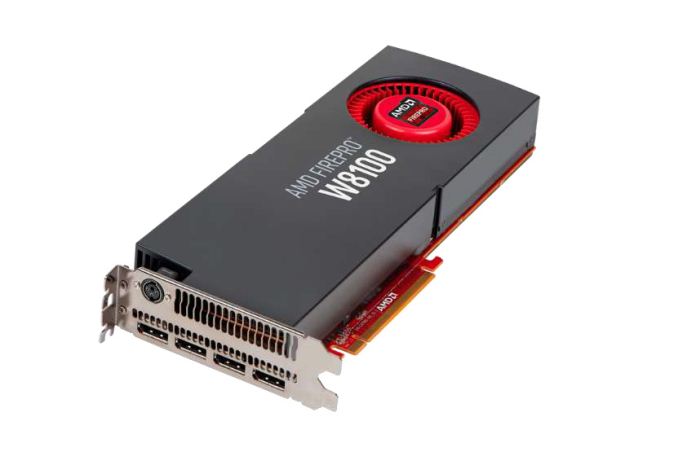

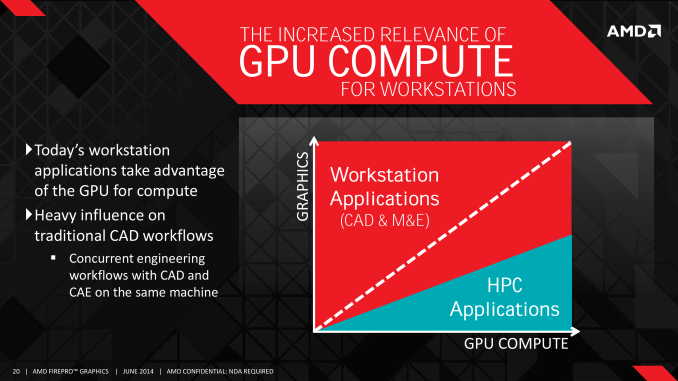

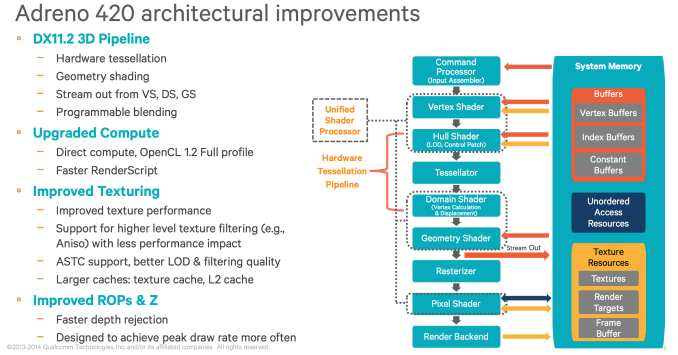
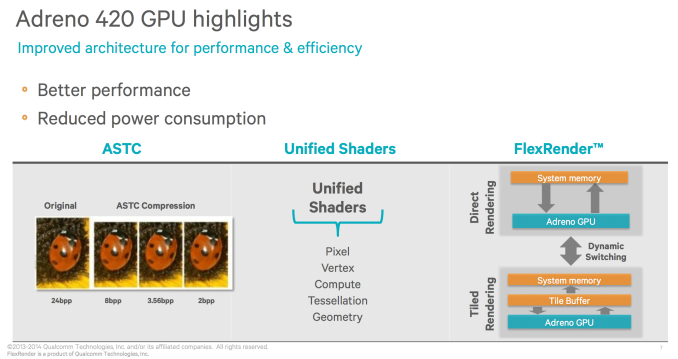
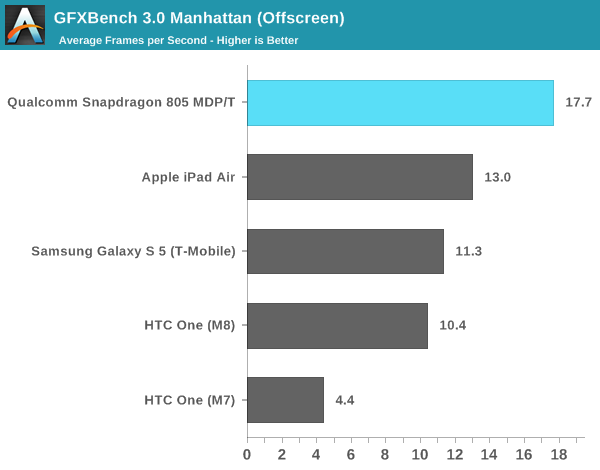
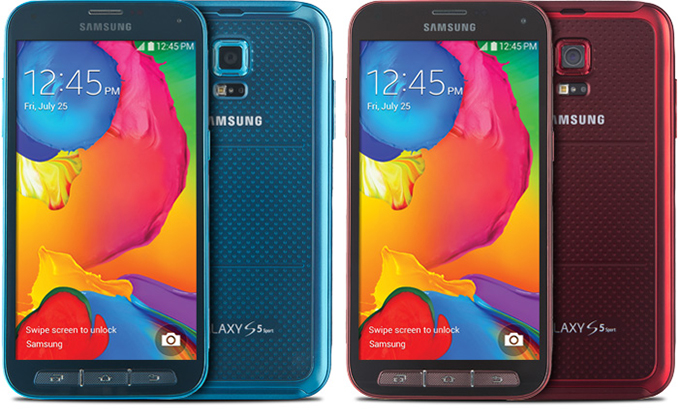
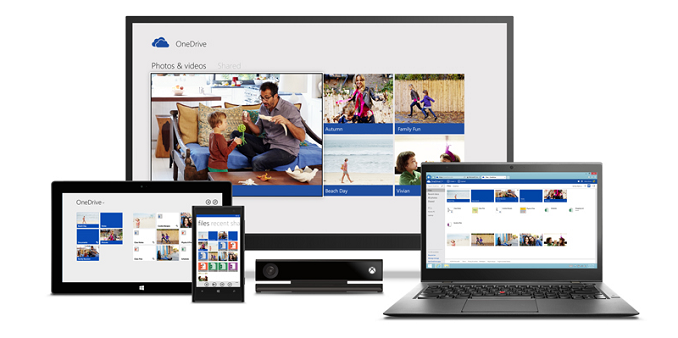
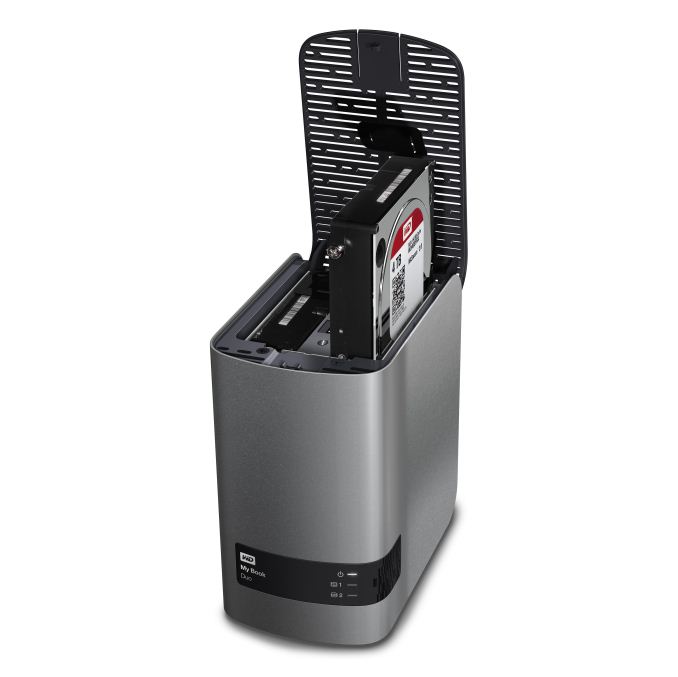
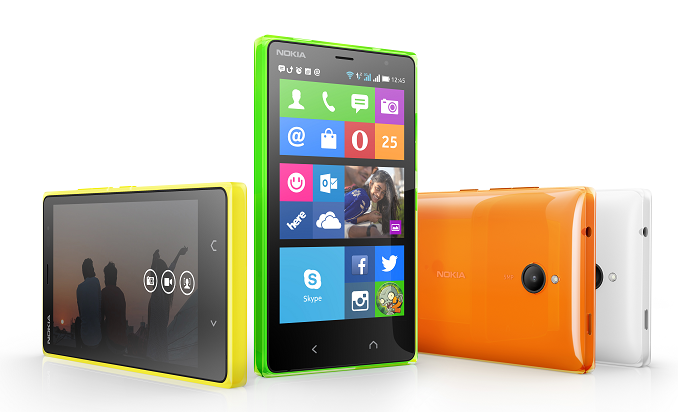





















Bookmarks